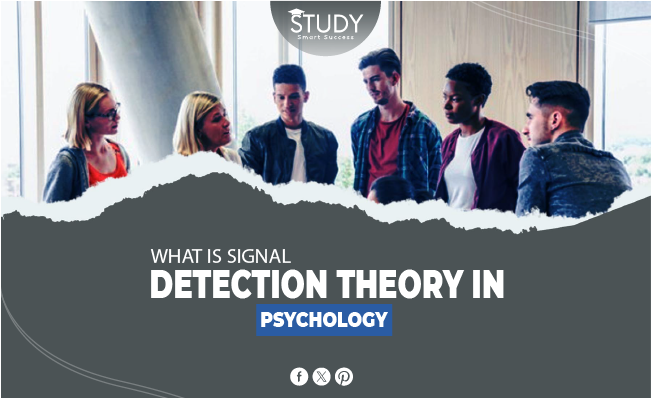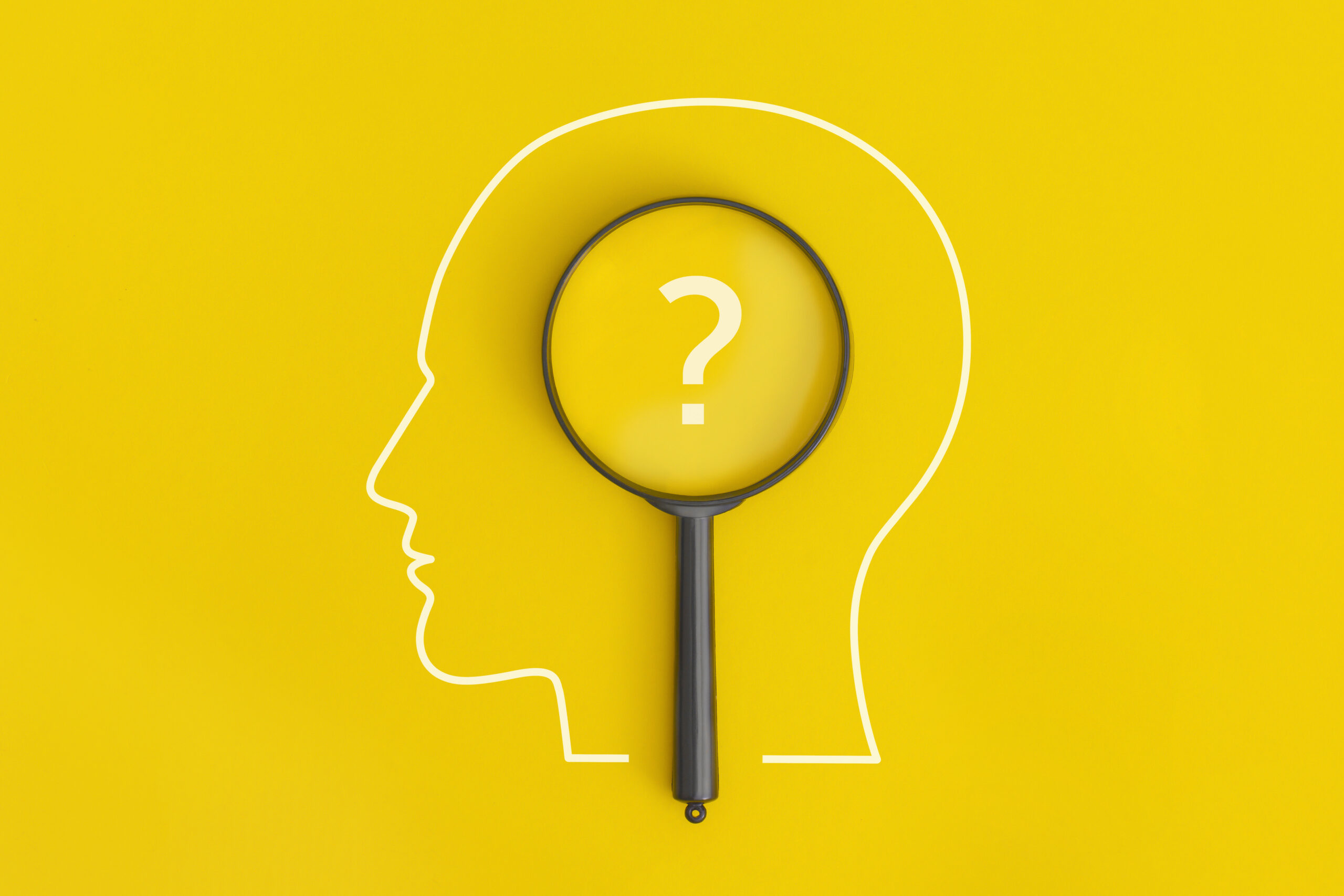Signal detection theory (SDT) combines perception and judgment in psychology, a vast and complicated field. Its various applications and effects make this theory noteworthy. It shows people reading signals in noise. This blog post is for psychology students, educators, and mental health professionals interested in signal detection theory, its importance, and its applications.
Understanding Signal Detection Theory
Signal detection theory studies how people distinguish essential messages from “noise” or distractions. This World War II radar and electrical engineering concept explains human eyesight and decision-making for psychologists.
Researchers in psychology say that how we make decisions affects how strong the signal is and how we find it. This idea is called signal recognition theory. This shows how sense processing and mental factors like assumptions, goals, and personal biases affect each other.
You can sum up SDT in two critical metrics: sensitivity and reaction criterion. When someone is sensitive, they can pick out signs of the noise. It’s a way of measuring how well their perception systems can tell the difference. At the same time, the watcher sets the reaction criterion, which is the certainty they need before deciding they’ve picked up a signal.
This level might vary greatly depending on risk tolerance, expected results, and expected rewards or punishments. SDT uses these metrics to see whether signals are picked up and how and why individuals make different decisions when they don’t know what will happen.
Key Components of SDT
- Hit: Correctly identifying a signal amidst the noise.
- Miss: Failing to detect a signal.
- False Alarm: Incorrectly perceiving a signal in the noise.
- Correct Rejection: Accurately identifying that there is no signal in the noise.
The theory further introduces two critical metrics:
- Sensitivity (d’): The ability to distinguish between signals and noise.
- Criterion: The threshold for how much evidence is needed before declaring a signal’s presence.
The Significance of Signal Detection Theory
Signal detection theory gives us more complex views on perception, highlighting that it is not just the input that causes perception behavior but also how a person responds to it. This knowledge changes how we think about and understand human behavior, especially when deciding what to do when we don’t know what will happen.
Applications Across Fields
- Clinical Psychology: SDT helps us understand several mental illnesses, like schizophrenia, in which people may have changed ways of detecting signals (for example, being more sensitive to signals that aren’t there).
- Cognitive Psychology: It helps us understand how our senses and minds work.
- Medical Field: SDT concepts improve the accuracy of diagnoses by telling the difference between healthy and sick states when signs combine.
Enhancing Decision-Making with SDT
Adding signal detection theory to the study of decision-making has created new ways to examine how people make decisions when unsure and at risk. This enormously affects the economy and finances because knowing how decisions are made can help better plan for evaluating and managing risk. Using SDT, experts in these areas can create models that mimic various decision-making situations. This allows people and groups to make better decisions when they don’t have all the facts.
Education and Training
Signal recognition theory is critical in clinical and study settings, defenses, schools, and training programs. Educators and teachers use what they learn from SDT to create tests and learning tasks that better show how much students know versus how well they guess or take tests. This gives us a complete picture of how students learn and how well different training methods work.
The fact that signal detection theory can be used in many different areas shows how important it is to understand how people think, make decisions, and perceive things.
Future Directions for Signal Detection Theory
The future of signal detection theory will be full of exciting new things to learn and use. Combining computer models and artificial intelligence may help us grasp complicated decision-making and perception as technology improves.
These advances may make medical testing equipment more accurate, making distinguishing between healthy and sick states more straightforward. In psychology, SDT and scanning methods may show how the brain receives signals, offering important information about how our brains work and think.
SDT in cybersecurity and IT might revolutionize how threats are detected in massive data sets, strengthening cyber defenses. Adaptive learning technology may use SDT to tailor lessons and exams to each student’s needs and responses, changing customized learning.
Signal detection theory is still used in many fields, showing its adaptability to modern science and technology. Its fundamentals may help us comprehend how people and computers think and enhance society and health.
Signal Detection Theory in Everyday Life
The ideas behind signal detection theory can be seen in many everyday situations, such as
- Driving in foggy conditions requires distinguishing potential hazards from benign elements.
- A teacher scanning an essay might overlook minor errors (a miss) or incorrectly mark correct statements as errors (false alarms).
- In noisy environments, deciding whether one heard their name called showcases the interplay between auditory sensitivity and decision criteria.
Enhancing Signal Detection: Tips and Strategies
Know and use signal detection theory to further your career, particularly in fields requiring clear vision and decision-making. Here are some ways to make signal recognition better:
- Increase Sensitivity: Train and gain skills to improve your ability to pick up signs.
- Adjust Criterion: You should change the decision-making level depending on the situation. Raising the standard might lower the number of misses but increase the number of fake alarms, and vice versa.
- Feedback Loops: Implementing feedback systems may help individuals identify things and make judgments over time.
Cognitive Biases and SDT
An important aspect of signal detection theory examines cognitive defects and how they impact signal detection and decision-making. Certain cognitive biases, such as confirmation bias and the availability heuristic, may affect sign recognition.
For instance, someone who expects a specific outcome may drop their signal standards. This can cause more false alarms as they try to catch the expected signal.
Understanding these biases and how they impact decision-making is necessary for SDT to enhance clinical diagnosis, security screening, and everyday judgments.
Conclusion
Signal recognition theory (SDT) in psychology examines how humans perceive, process, and act on information. By studying SDT, psychologists may learn more about human behavior, enhance assessment, and better navigate signals and noise.
Engage and Learn More
Students of psychology, teachers, and people who work in mental health are welcome to attend the talk. In what ways have you encountered or used signal detection theory in your work or studies? Please leave your thoughts and stories in the section below.
Reading professional publications and taking courses on signal detection theory may help you understand it. Together, we can learn how individuals think and make choices, improving our understanding of the mind.
Recognizing clues in ordinary noise is an art and a science that improves with experience.



